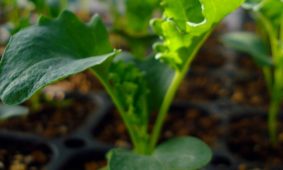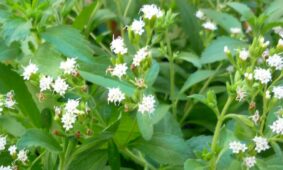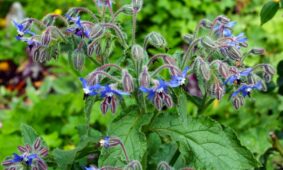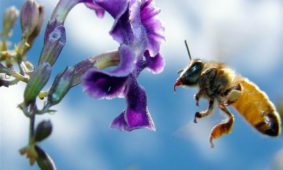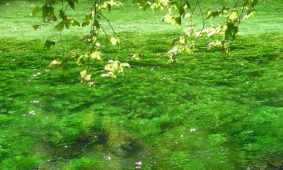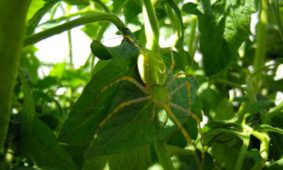When to Transplant Seedlings
One common question from people who are growing plants from seeds is “how do I know when my seedlings are big enough to transplant?” This is a good question to ask when learning how to start plants from seeds because transplanting seedlings at the proper time is crucial to their development later on. If you […]
READ ARTICLEMiami Science Museum Uses EzGro
The Museum is making preparations to grow and harvest edible crops on the property again. Two different types of hydroponic systems will be explored at the Museum, one using a series of planters in the Wildlife Center (supported by the Batchelor Foundation), and the other a Vertically Integrated Greenhouse (VIG) in the Sea Lab – […]
READ ARTICLEBackyard EzGro Garden by Bob from SC
The system was easy to assemble – We did lay out landscape fabric, drove the conduit in the ground (Both pieces) and then covered the ground with mulch. To cut the PVC pipe we used a chop saw with a fine tooth blade to ensure that the cuts were straight. A couple of cable ties […]
READ ARTICLEStevia the Sweet Herb
The Guarani Indians of Paraguay and Brazil had been sweetening their bitter beverages with kaa he-he (meaning sweet herb) for centuries before Italian botanist Moises Santiago Bertoni “discovered” the herb in 1887 and recognized it as a previously “unknown” variety of stevia. He named it Stevia rebaudiana in honor of the Paraguayan chemist named Rebaudi, […]
READ ARTICLEThe Borage Plant
Borago officinalis The Borage plant is an annual with an exquisite, bright blue and star-like flowers which are edible.The Borage flowers have very prominent black anthers that grow from its center. It grows to about 1 to 3 feet tall with multiple branches, hollow stems, and large, gray-green, oval, pointed leaves that are hairy. The […]
READ ARTICLEWhole Foods Store Millburn, New Jersey
BrightFarm Systems was commissioned to design and install a demonstration scale, sustainable urban greenhouse for a new Whole Foods Market store in Millburn, New Jersey. Sustainable Agriculture and Wise Environmental Practices are two core values of Whole Foods Market. They are also significant supporters of local farmers in the Northeast region and beyond. The demonstration […]
READ ARTICLEHoney Bee
The honey bee is responsible for approximately 80% of the pollination of fruits, nut, grains, and vegetables in the United States today. Honey bees are not native to North America; they were brought here by European settlers in the colonial days to pollinate their crops and for the products created or gathered by the honey bees-honey, propolis, royal jelly, pollen,
READ ARTICLEThe Gardens of Babylon
Many new devices, ideas and civilizations have emerged because, “Necessity is the mother of invention”. The shortage of water and available arable land for planting crops is not a new issue. Throughout history, archaeological evidence shows us that thousands of cities have been built on land that was safe from invasion, but not necessarily ideal […]
READ ARTICLEHydroponics First Recorded Scientific Experiments
Some three centuries ago, john Woodward, an English scientist and a fellow of the Royal Society, undertook the first recorded scientific experiments on the subject of plant nutrition. He wanted to know whether plants drew nourishment from the soil or from water. Woodward discovered that adding small amounts of soil to the water in which […]
READ ARTICLEOrganic Farming vs Hydroponics
“Go organic” has become the battle-cry of thousands of Americans who assume that food items labeled “organic” is automatically a better, healthier product. Is this really true? Both organic farming and hydroponic farming embrace a desire to protect our planet’s fragile environment. Both methods steer clear of harmful chemical fertilizers and pesticides. Both seek to […]
READ ARTICLELadybug
What is it about the tiny Lady Beetle that makes people like them? Is it their bright colors or domed shape? Or do we sense how much good they’ve done us through the centuries? Whatever the attraction, it’s gone on for a long time and is quite widespread.
Many European cultures had a high regard for this beetle family as early
READ ARTICLEGreen ‘Lynx’ Spider
The Green ‘Lynx’ Spider is found on all kinds of shrub-like plants throughout the southern United States, Mexico, Central America, Venezuela and the West Indies. You can find the Green ‘Lynx’ Spider in woods on tall grasses and in meadows of tall wildflowers, especially on the heads of wild buckwheat. The Green ‘Lynx’ Spider is a common resident in Texas
READ ARTICLE




